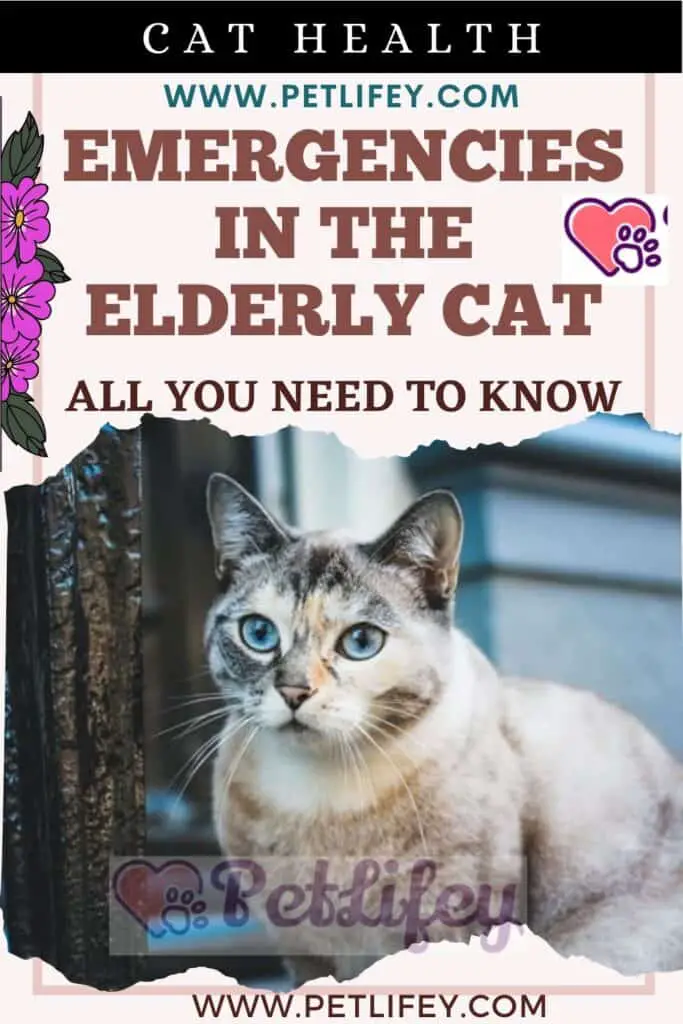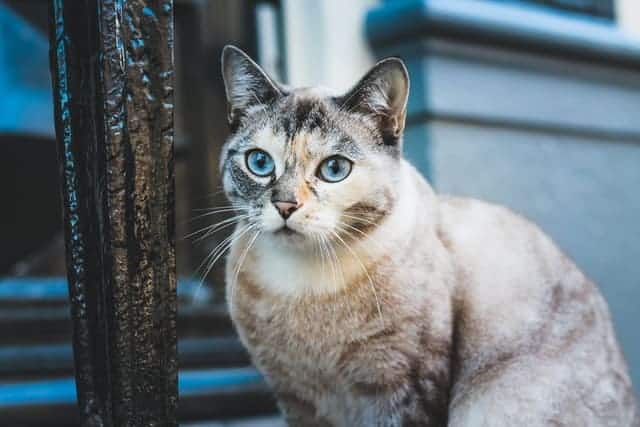Emergencies in the elderly cat, the most common that can occur over the years in our aging cat.

The emergencies in the elderly cat should not be underestimated at all and above all we must not act without the opinion of the veterinarian who knows our animal well.
Thanks to this many years of knowledge of our cat, the doctor will know how to intervene.
The vet will do it in the best possible way to be able to safeguard the well-being of the cat, in such a way as to give the animal a greater chance of living a satisfying and above all longer life.
In this regard, in this article we will understand which are the most common emergencies in the elderly cat and how it is possible to prevent some problems.
Emergencies in the elderly cat
When we adopt a pet, we do it with all the love and enthusiasm we can get.
Only after a while do we realize that the animal needs the same care as any other living being, and as such it will grow and then age.
Unfortunately this process happens much faster than ours. Which is why we will find ourselves in the space of about ten years taking care of our big cat with a few more ailments, due precisely to old age.
There is nothing sadder than witnessing this change that slowly leads to the death of our little furry friend.
What we can do is to make this old age process as less traumatic as possible by taking care of our cat and going hand in hand with a healthy life and due routine checks.
However, it is important to know which are the most common emergencies in the elderly cat, in order to know when and how to intervene by consulting the veterinarian.
The most common emergencies in older cats are:
- Arthritis in cats: It is a degenerative disease of the joints, it is a painful condition in which the joints carry away the cartilage until one bone scratches against another bone. Obvious signs that your cat is suffering from arthritis include a reluctance to go up and down stairs. Regarding the treatment, the veterinarian will be able to relieve pain to manage the disease but will not be able to cure it;
- Renal insufficiency : The renal insufficiency affecting elderly cats is of the chronic type, that is a progressive pathology that manifests itself in different stages, caused by the gradual deterioration of the different parts of the kidney. Symptoms include a change in bathroom habits and excessive thirst. If caught early, the vet can save the cat and increase the quality and duration of life;
- Breathing problems: The most obvious signs may be: wheezing, strange noises emitted from the mouth. The most serious hypothesis is hypoxia (abnormally low oxygen) which can lead to many types of consequences including respiratory arrest and even death if not treated immediately.
- Hyperthyroidism : Hyperthyroidism in cats is quite common in older cats, it is caused by a gland located in the throat that when it functions poorly produces too many thyroid hormones. This abundant production can cause damage to the cat’s health. Through the necessary tests, the veterinarian determines any hormonal imbalance and then proceeds with the treatment using the appropriate drugs;
- Urinary obstructions: If the cat is unable to urinate, there is an obstruction of the urethra. This condition occurs if sand particles or other small particles have lodged and block the area but this is also possible due to an infection. If you do not intervene in time, the changes can also lead to the death of the cat;
- Vomiting and diarrhea in cats: If your cat suffers from violent diarrhea or persistent vomiting, you must go to the vet immediately;
- Ingestion of toxic substances: The elderly cat, even if it has always lived in our house in contact with toxic materials that it has never been interested in, with the passing of age, with its sense of smell and sight worsening, it could accidentally ingest dangerous material, such as : antifreeze, chemical cleaners, toxic plants, etc. Faced with such a situation, the animal must be transported to the vet as soon as possible.
- Cat limb paralysis: The cat is unable to move its hind limbs, this is caused by a condition called Aortic thromboembolism (ATE) which results from a blood clot lodged in one of the arteries in the hind legs causing paralysis, pain and severe physical suffering. In this case, immediate care is required.
Know your cat

In order to determine if there are changes in your pet’s habits, it is important to know the character of the cat and its routine well, in order to determine if there is to worry.
It will therefore be necessary to define the basic behaviour and “normal” habits of your cat, observing:
- the level of activity;
- gait;
- eating habits;
- social behavior;
- the times and quantities of needs;
- the care he devotes to his body.
Only by knowing the usual behaviour of the animal well will it be possible to determine if there are changes that need to be worried about.
Prevention
As with all diseases, experts recommend prevention, even in the case of old age the best solution is to prevent.
In animals as well as in humans, nutrition often makes a difference. Eating healthy and above all eating quality products guarantees good health and a longer life span.
As for the cat, routine visits to the veterinarian, vaccine boosters and the application of the pesticide regularly are essential .
Remember it is always better to check it so that the veterinarian can intervene in time on any pathologies of the animal.






